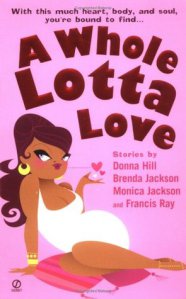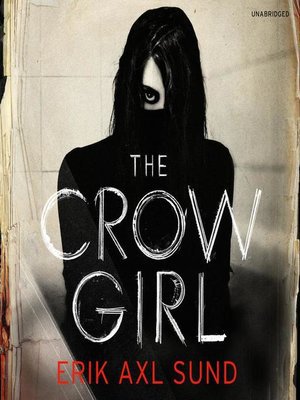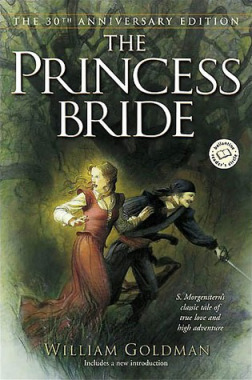Most romance novels are about sylph-like beauties who are at once slim and lush, the sort of young women who have tiny waists and yet also contain a fair amount of ‘feminine power.’ If the heroine is fat, she dumps that weight before she has even a chance at the hero. (And let’s be clear: we have never seen a fat hero in a romance novel.) I’d rather we didn’t fat-shame people while portraying healthy lifestyles, because you can be healthy and fat at the same time – there is research to that effect.
 I read two romance novels in quick succession, both about overweight women. One, A Whole Lotta Love, I bought not because it features four stories about plus size women, but because it’s explicitly about black women. Some romance novels are vague about the race of the female protagonist, but the vast majority I have seen here in Maine are about white chicks – maybe it’s a national thing.
I read two romance novels in quick succession, both about overweight women. One, A Whole Lotta Love, I bought not because it features four stories about plus size women, but because it’s explicitly about black women. Some romance novels are vague about the race of the female protagonist, but the vast majority I have seen here in Maine are about white chicks – maybe it’s a national thing.
I saw some interesting differences between the books I usually read and this one, but I can’t gloss the reality that these stories stunk on ice.
Book one featured the phrase “meat on her bones” (9), which unsettled me. He wants meat on her bones – to boil her into pea soup? Maybe Criminal Minds made more of an impact on me than it should have, but Jesus. There is no way of saying that phrase that doesn’t scream cannibalism. The rest of the story was rushed and boring.
On page 192 in the second book, a woman forgives a man for cheating on her because she wasn’t putting out. Uhm. The twenties called, and they want their morality back. Not the 1920s. The 1820s.
The third book was casually homophobic – if anything can be casually homophobic – and over the course of three pages, various characters used the word ‘tushie’ five times, six more than necessary.
In a gasp in between these vignettes, I questioned my grip on sanity. Tenuous.
On page 360, the hero of the fourth book parked is dumb car BEHIND AN AMBULANCE. BEHIND AN AMBULANCE. Are you not feeling outraged? Did you not waste a couple of hours reading some filth, even if it was for quasi-research purposes? BEHIND AN AMBULANCE!!!
I finished the book, watched a documentary, assured myself that I wasn’t slipping too far into psychosis, and picked up an old friend.
 Bet Me by Jenifer Crusie throws sparks on your brain, makes you think. Mainly, it makes you think, “I could really go for a donut right now.” But all of the characters are written well; they are sympathetic while having real faults and they each have interesting interior lives. Min, the main character, is overweight; she constantly gets crap about it from her mother, particularly because she’s the maid of honor at her sister’s wedding. In other books written by other people, she would be apologizing to her mother, but instead she goes along with what she can and draws a firm line when she can’t:
Bet Me by Jenifer Crusie throws sparks on your brain, makes you think. Mainly, it makes you think, “I could really go for a donut right now.” But all of the characters are written well; they are sympathetic while having real faults and they each have interesting interior lives. Min, the main character, is overweight; she constantly gets crap about it from her mother, particularly because she’s the maid of honor at her sister’s wedding. In other books written by other people, she would be apologizing to her mother, but instead she goes along with what she can and draws a firm line when she can’t:
“’Look, Mother, I am never going to be thin. I’m Norwegian. If you wanted a thin daughter, you should not have married a man whose female ancestors carried cows home from the pasture.’” (70)
This does not mean that she doesn’t have her issues. She’s on a constant diet to fit into her bridesmaid’s dress and to attempt to please the skinny bitches in her life. After eating some life-changing chicken marsala, she uses her dubious cooking skills to re-create it: no butter, no flour, almost no oil. When it predictably fails, her love interest, Cal, comes riding in with takeout – and one of the most romantic things I have ever read:
“’The reason you can’t lose weight is that you’re not supposed to lose weight, you’re not built that way, and if you did manage through some stupid diet to take the weight off, you’d be like that chicken mess you just made. Some things are supposed to be made with butter. You’re one of them.’” (150-151)
Of course, he goes on, but that’s the gist of it. Cal seduces Min with a judicious use of Elvis (both Presley and Costello) and with Crispy Crèmes. It’s glorious.
Bet Me isn’t just about a curvy woman finding love: it’s about the process of falling in love itself. Most of the characters in the story have a hypothesis about how love works.
Min thinks that you should figure out what you want and look for it.
Bonnie, one of Min’s friends, believes that love is like a fairy tale and that everyone has a prince.
Tony, one of Cal’s friends, believes in chaos theory: strange attractors cause particles to behave in strange ways. (It’s really more technical than that, but you believe him as you read.)
Cynthie, a psychologist in love with Cal, believes in a four step system (and getting her book published).
The best of all of them in my opinion is what happens when Min and Cal get together. It starts with Min, the first time she sees Cal: “Min sucked in her breath as every cell she had came alive and whispered, This one.” (7). It continues, on both sides, these subliminal nudges that become less and less subliminal: “THIS ONE.” (page 169 for him, 181 for her), up to “THIS ONE, YOU IDIOT.” (217). In all of the rest of the book, the others are making love a logical thing, something that can be explained in some way; I like the subconscious thunderings between Min and Cal because it feels more like real life.
You don’t need reasons or steps in love; love wants love, and love wants to love a lot.
Jennifer Crusie is great at this style of book: it’s not just about a love story, it’s about five things at once and they all seem to work. She shows that there’s more to life than romantic love (great though it may be), that there is friendship and good music, and donuts. She shows that fat women fall in love just as they are, she shows that you don’t have to be ‘fixed’ in order to be worthy of attention. She shows that someone in the romance-writing community knows how to be witty, funny, heartfelt…and that, comrades, is why I love her. Yes, it’s fluff, but it’s good fluff.
Advertisements Share this:




